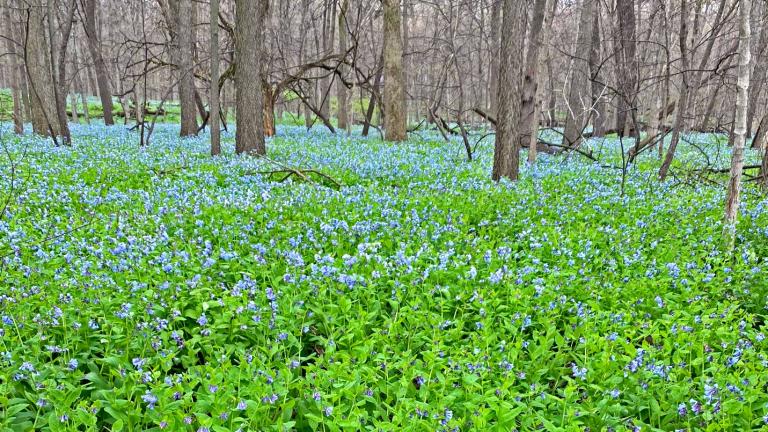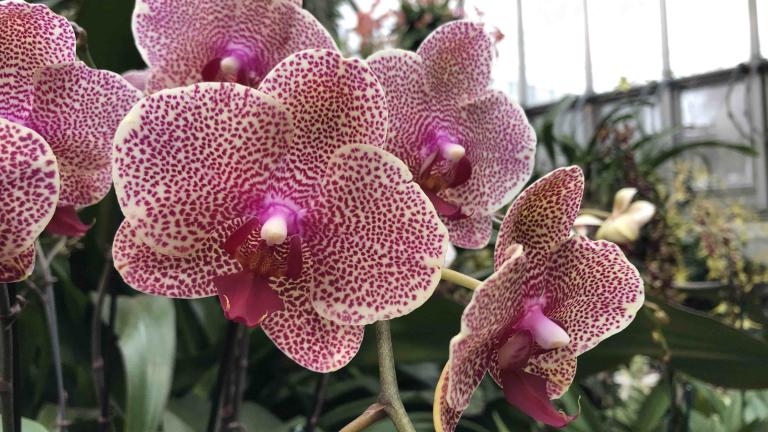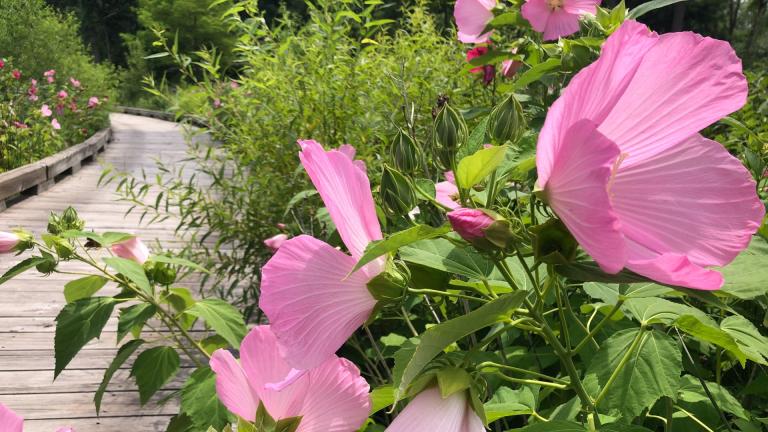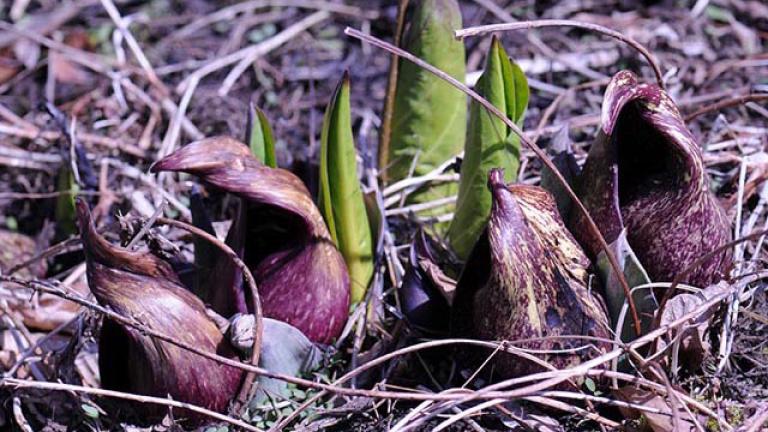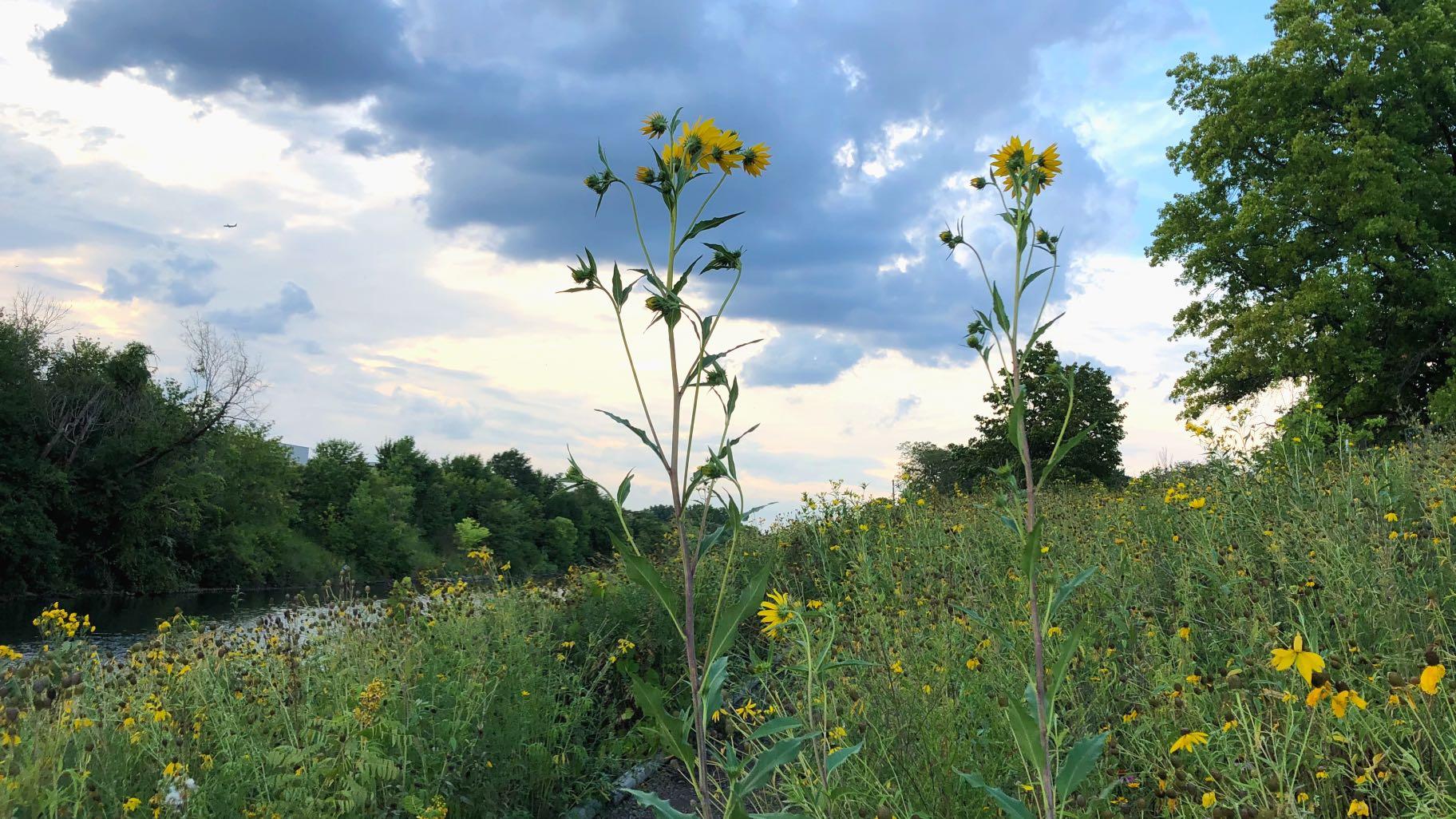 The Sawtooth Sunflower, a native perennial species, is one of late summer's towering giants in the Chicago region's natural areas. (Patty Wetli / WTTW News)
The Sawtooth Sunflower, a native perennial species, is one of late summer's towering giants in the Chicago region's natural areas. (Patty Wetli / WTTW News)
Summer is ending on a high note, at least in the Chicago region’s natural areas.
It’s the time of year when some of the tallest native plants are in bloom, coming into their own just as most other flora are on the wane. And by tall, we mean they could easily dunk on LeBron James.
These giants are easy to spot in parks and nature preserves — just look up.
Giant Ironweed (Vernonia gigantea, Asteraceae family)
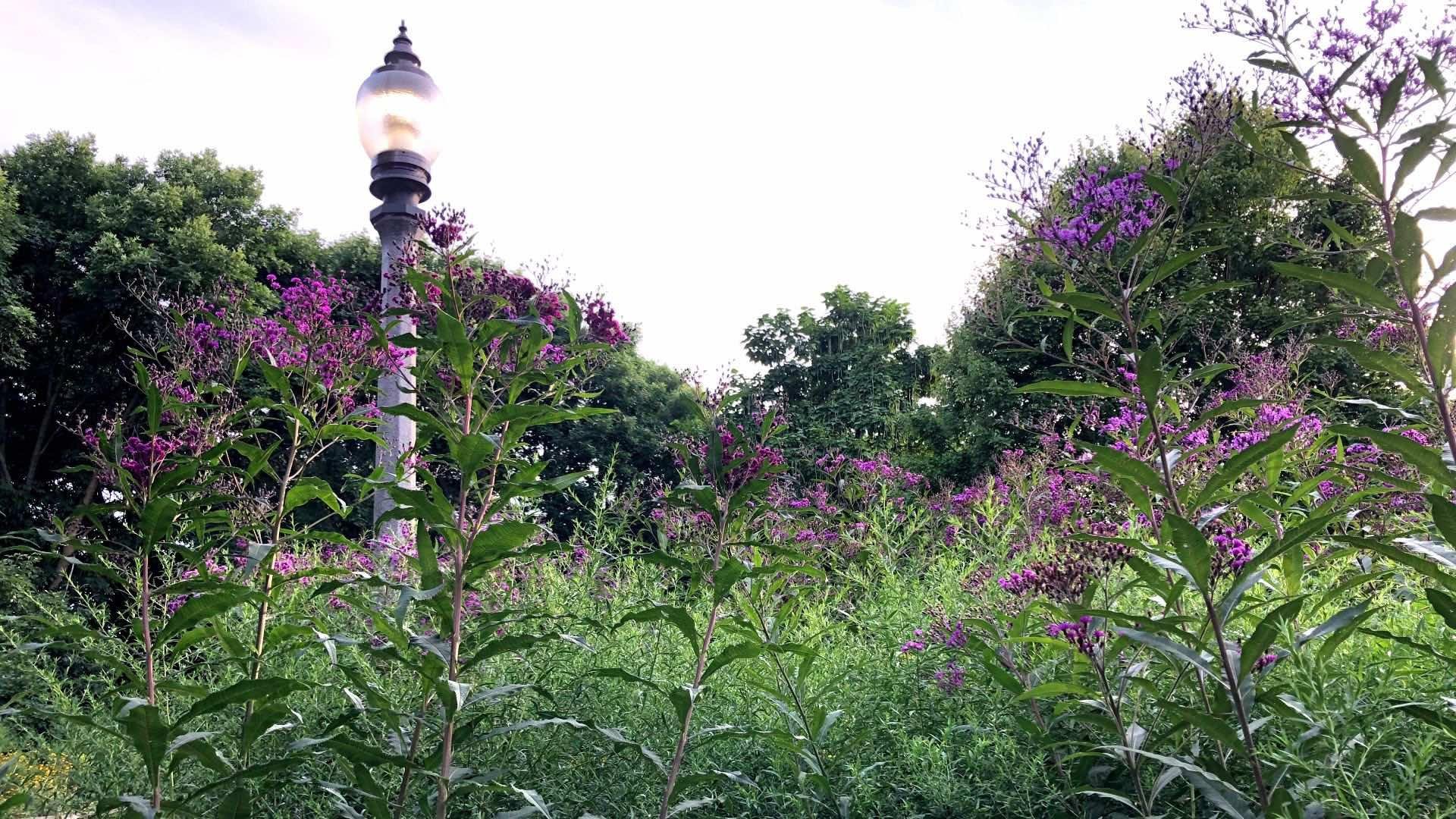 Ironweed can reach 10 to 12 feet, crowned with intensely colored blooms. Seen at Winnemac Park in Lincoln Square. (Patty Wetli / WTTW News)
Ironweed can reach 10 to 12 feet, crowned with intensely colored blooms. Seen at Winnemac Park in Lincoln Square. (Patty Wetli / WTTW News)
With its intensely colored flowers, ranging from magenta to deep purple, ironweed is already plenty showy. Gigantea adds to the wow factor with its extreme height: While 8-foot plants are typical, Giant Ironweed has also been known to climb up to 10-12 feet.
The Chicago Botanic Garden has dubbed ironweed a “powerhouse pollinator” because the plant serves as a valuable food source for bees, butterflies and other insects from late summer to early fall.
Sawtooth Sunflower (Helianthus grosseserratus, Asteraceae family)
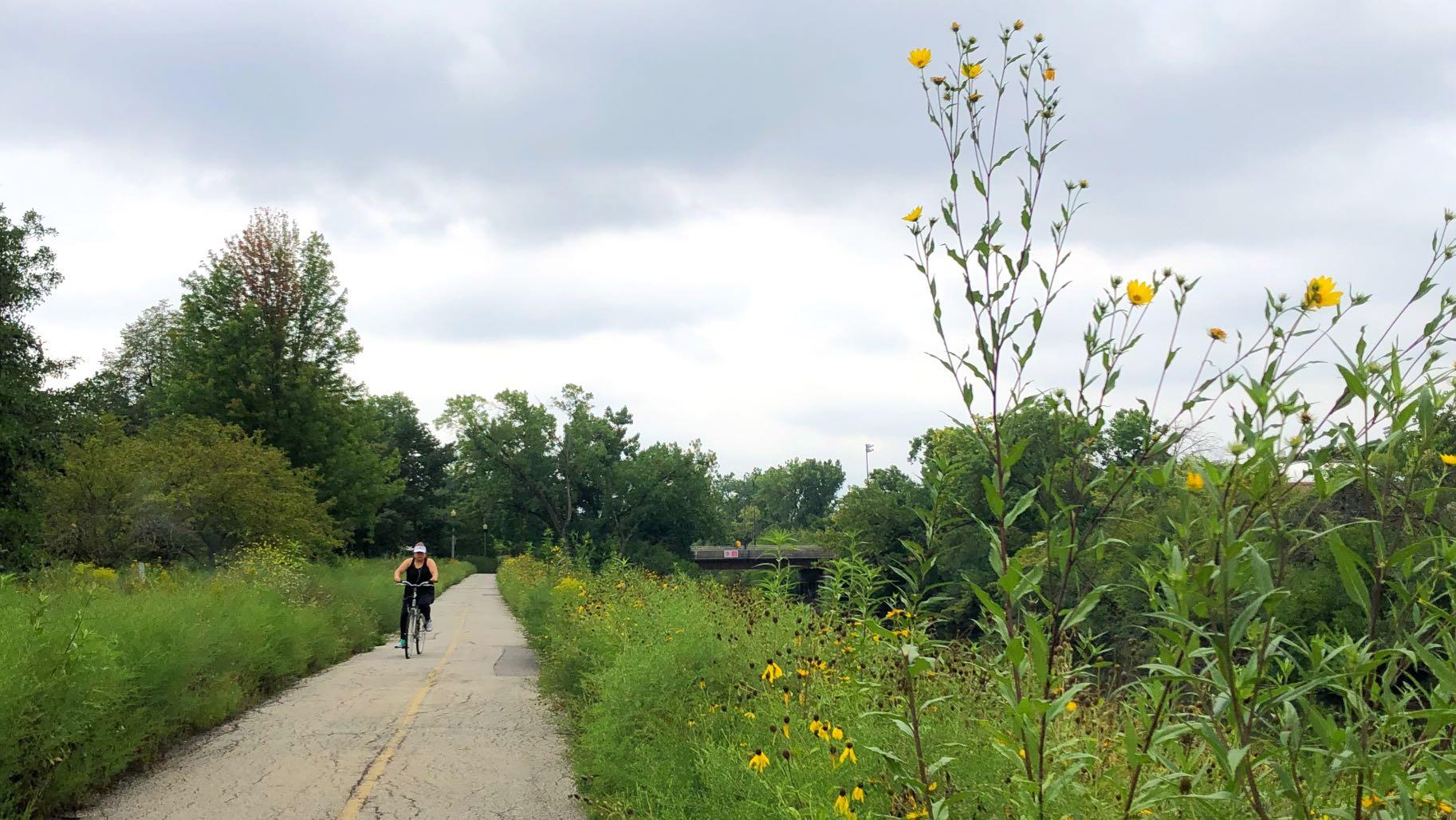 Native perennial sunflowers were planted along the North Shore Channel as part of a riverbank restoration project. (Patty Wetli / WTTW News)
Native perennial sunflowers were planted along the North Shore Channel as part of a riverbank restoration project. (Patty Wetli / WTTW News)
This is not the cultivated annual sunflower of a million Instagram backdrops. Grosseserratus is among the native, perennial sunflower species commonly found in Illinois.
When it becomes established in clumps or colonies, the Sawtooth typically maxes out at 5 feet. But, according to Illinois Wildflowers, “lone wolf” plants can soar as high as 12 to 13 feet. Beavers and muskrats like to use the plants’ stems to build dams.
Other vertically ambitious native perennial sunflowers include Giant Sunflower (Helianthus giganteus) and Jerusalem Artichoke (Helianthus tuberosus).
Giganteus, capable of reaching 9 feet, is state-listed as “endangered” in Illinois, with Cook County being one of the plant’s remaining strongholds. Look for it in higher quality wetlands — places that enjoy full sun, moist conditions and sandy soil. Tuberosus is distinctive not just for its height — up to 8 feet — but as a food source. Indigenous peoples of North America cultivated the plant for its potato-like tubers.
Silphium Trio
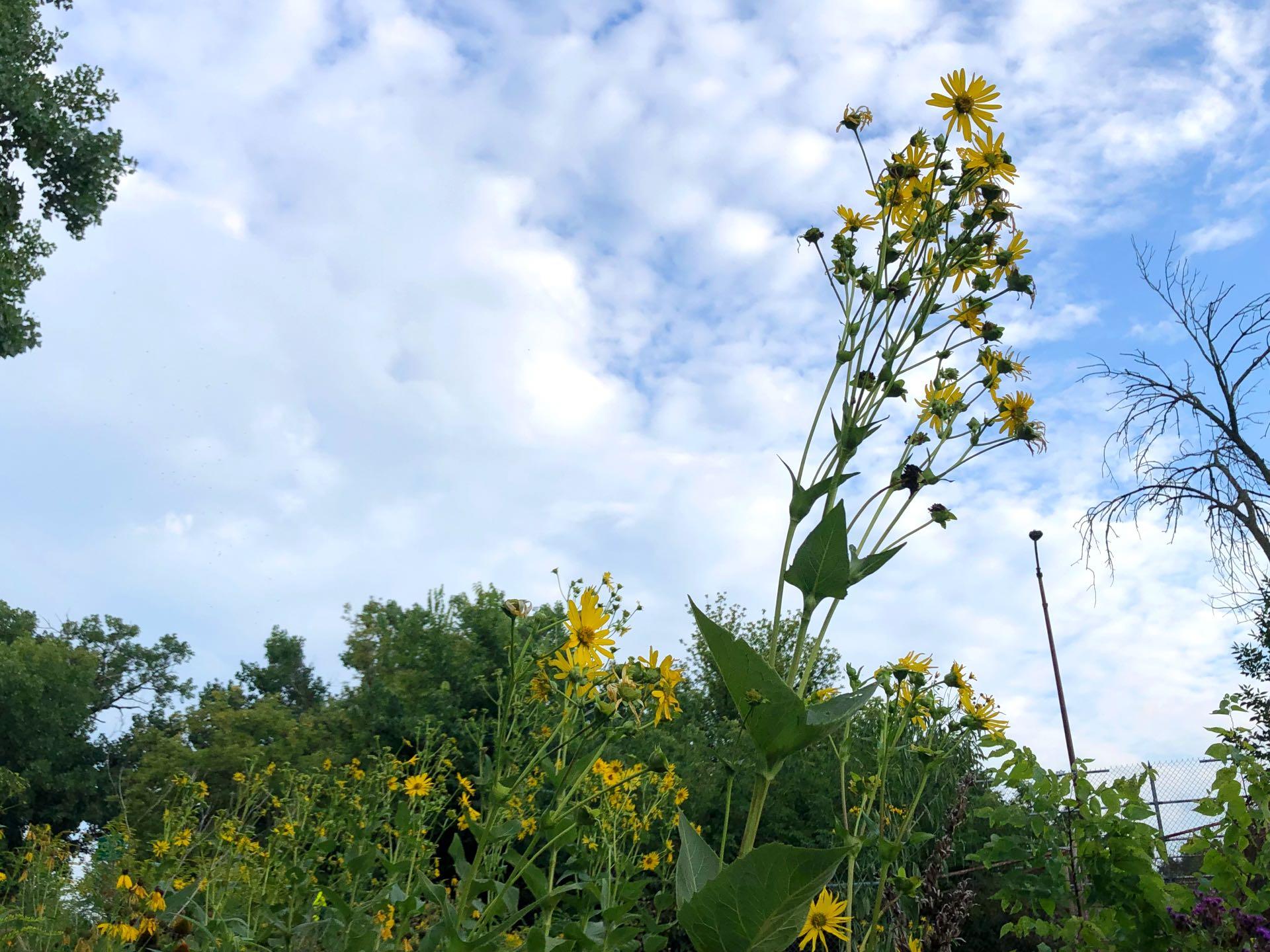 Cup Plant can be distinguished from other yellow-flowered plants by its distinctive leaves, which form a cup. Seen in River Park in Lincoln Square. (Patty Wetli / WTTW News)
Cup Plant can be distinguished from other yellow-flowered plants by its distinctive leaves, which form a cup. Seen in River Park in Lincoln Square. (Patty Wetli / WTTW News)
When is a sunflower not a sunflower? When it’s a member of the Silphium genus.
Cup Plant (Silphium perfoliatum), Compass Plant (Silphium laciniatum) and Prairie Dock (Silphium terebinthinaceum) all tower over the late summer landscape and they all have similar yellow composite flowers. The simplest way to tell them apart, from each other and from Helianthus, is through their foliage.
Cup Plant, which can grow up to 10 feet tall, has a thick four-sided stem, with large pairs of opposing leaves that join to form a cup. Goldfinches in particular love the plant’s seeds.
To identify Prairie Dock, another 10-footer, look down. The cluster of leaves at its base are enormous — up to 18 inches long and 12 inches wide — and shaped like spades. Impressively, there’s even more of the plant underground than above: Its taproot can run 12 feet deep.
Compass Plant reaches even loftier heights — topping 12 feet — and plunges even further, with a central taproot that can extend to depths of 15 feet. The plant’s quirkiest trait is the resin its upper stem produces when in bloom. According to Illinois Wildflowers, this resin was used by indigenous children as a chewing gum.
Joe-Pye Weed (Eupatorium maculatum, Asteraceae family)
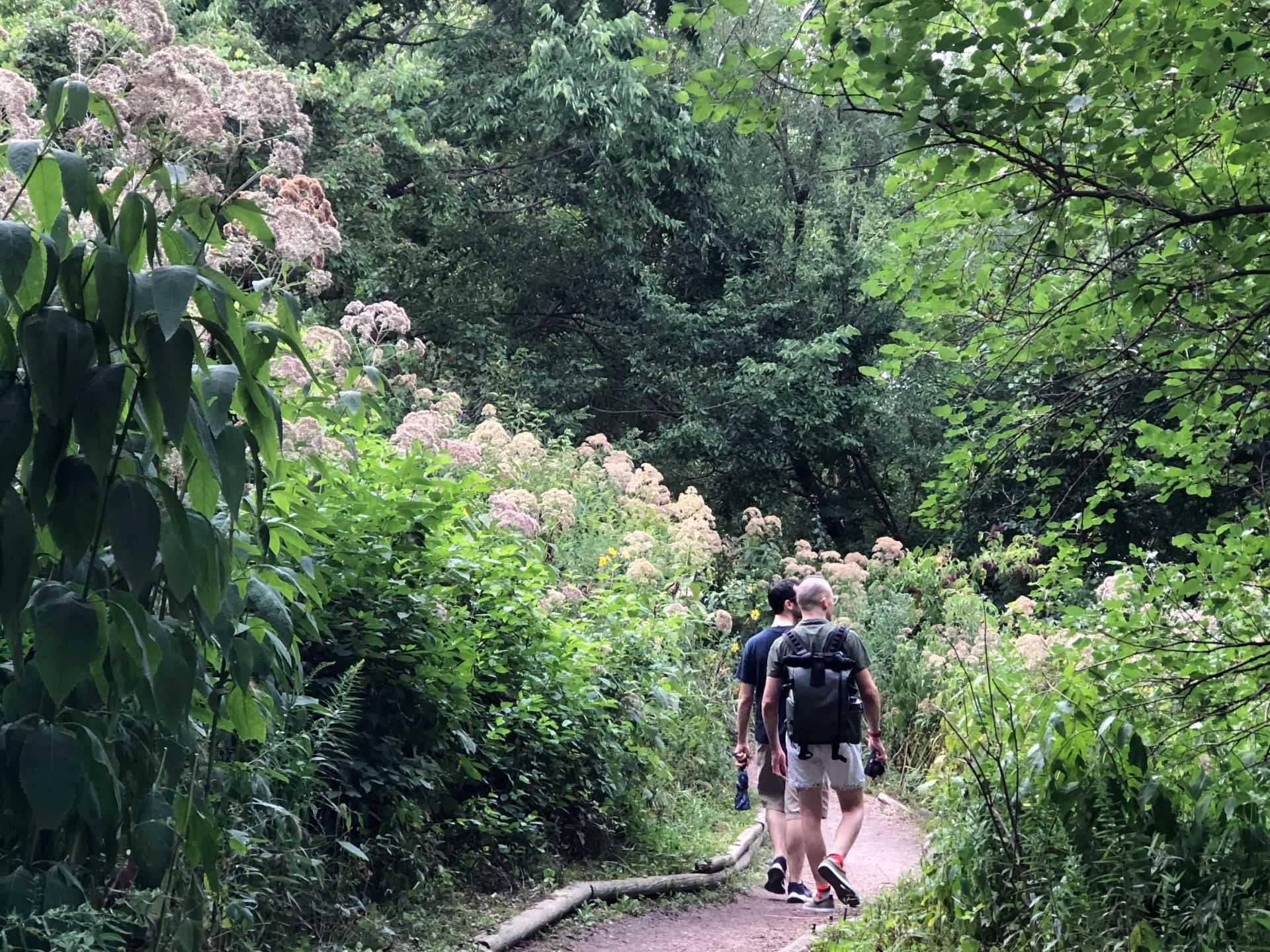 Joe-Pye Weed, seen at Ronan Park in Albany Park, can reach heights of 7 to 8 feet. (Patty Wetli / WTTW News)
Joe-Pye Weed, seen at Ronan Park in Albany Park, can reach heights of 7 to 8 feet. (Patty Wetli / WTTW News)
This butterfly magnet, with its pale pink-to-pinkish purple flowers, is becoming increasingly popular in native gardens.
In the wild, Joe-Pye weed is one of the tallest wildflowers found in wooded areas — some varieties reach 8 to 10 feet.
The plant’s name has long been rumored to reference a Native American herbalist, Joe Pye, who used the plant to cure illnesses, including typhoid. A 2017 scholarly article, published in the Great Lakes Botanist journal, debunked at least part of that myth.
According to Richard Pearce and James Pringle, the report’s authors, Joe Pye was the name Massachusetts settlers gave to a neighboring Mohican chief, Joseph Shauquethqueat. Pearce and Pringle speculate that white neighbors observed Shauquethqueat collecting plants and came to associate them with, and later named them after, the man they called Joe Pye.
Big Bluestem (Andropogon gerardii, grass family/Poaceae)
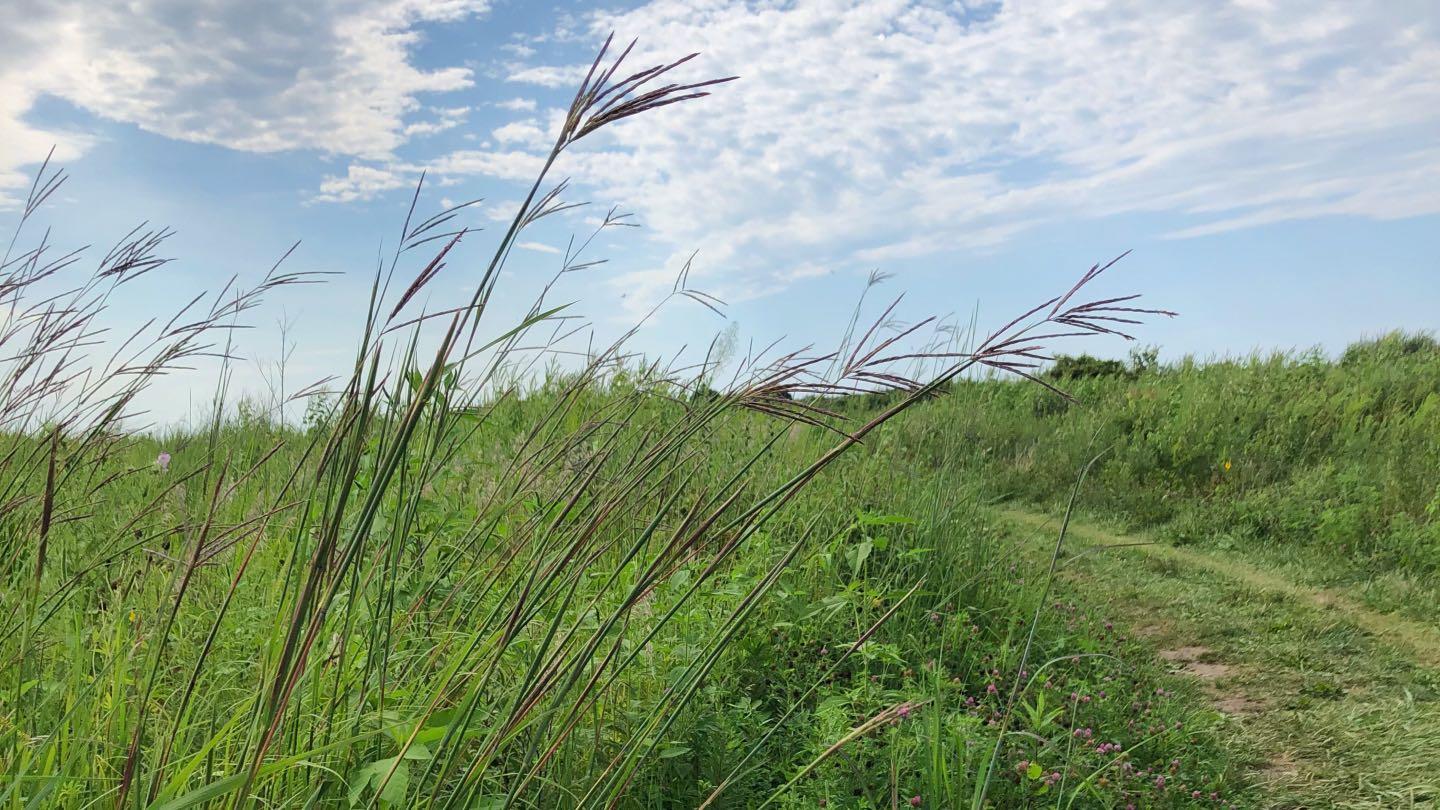 Big Bluestem is one of the dominant species of tallgrass prairies. Seen at Illinois' Matthiessen State Park. (Patty Wetli / WTTW News)
Big Bluestem is one of the dominant species of tallgrass prairies. Seen at Illinois' Matthiessen State Park. (Patty Wetli / WTTW News)
It’s impossible to talk about native skyscrapers without mentioning the prince of the prairie, Big Bluestem, one of the dominant species of the tallgrass prairie.
This statuesque grass can reach 10 feet, with a root system that burrows 12 feet deep. Its kingdom would have once stretched for unbroken miles before Illinois’ vast prairies were plowed under for farmland.
Today, Big Bluestem can be found in remnant prairies and restored natural areas. Its late-summer growth spurt gives other cool-season plants a chance to flower before Big Bluestem looms over an area. A close look at the grass’s flower head explains one of its other nicknames: turkey foot.
Contact Patty Wetli: @pattywetli | (773) 509-5623 | [email protected]

